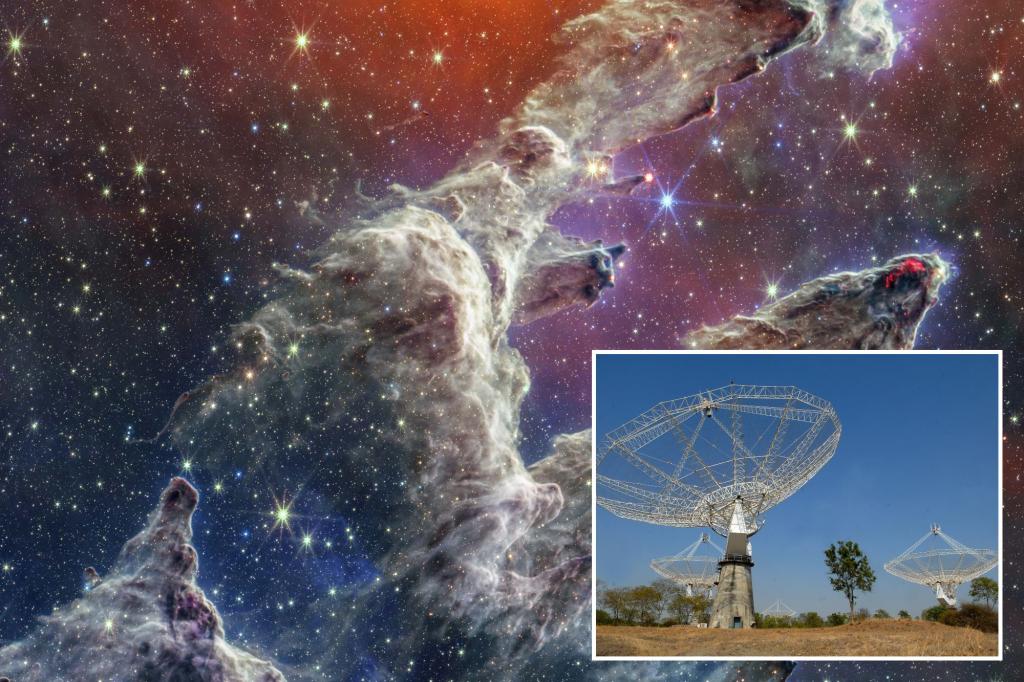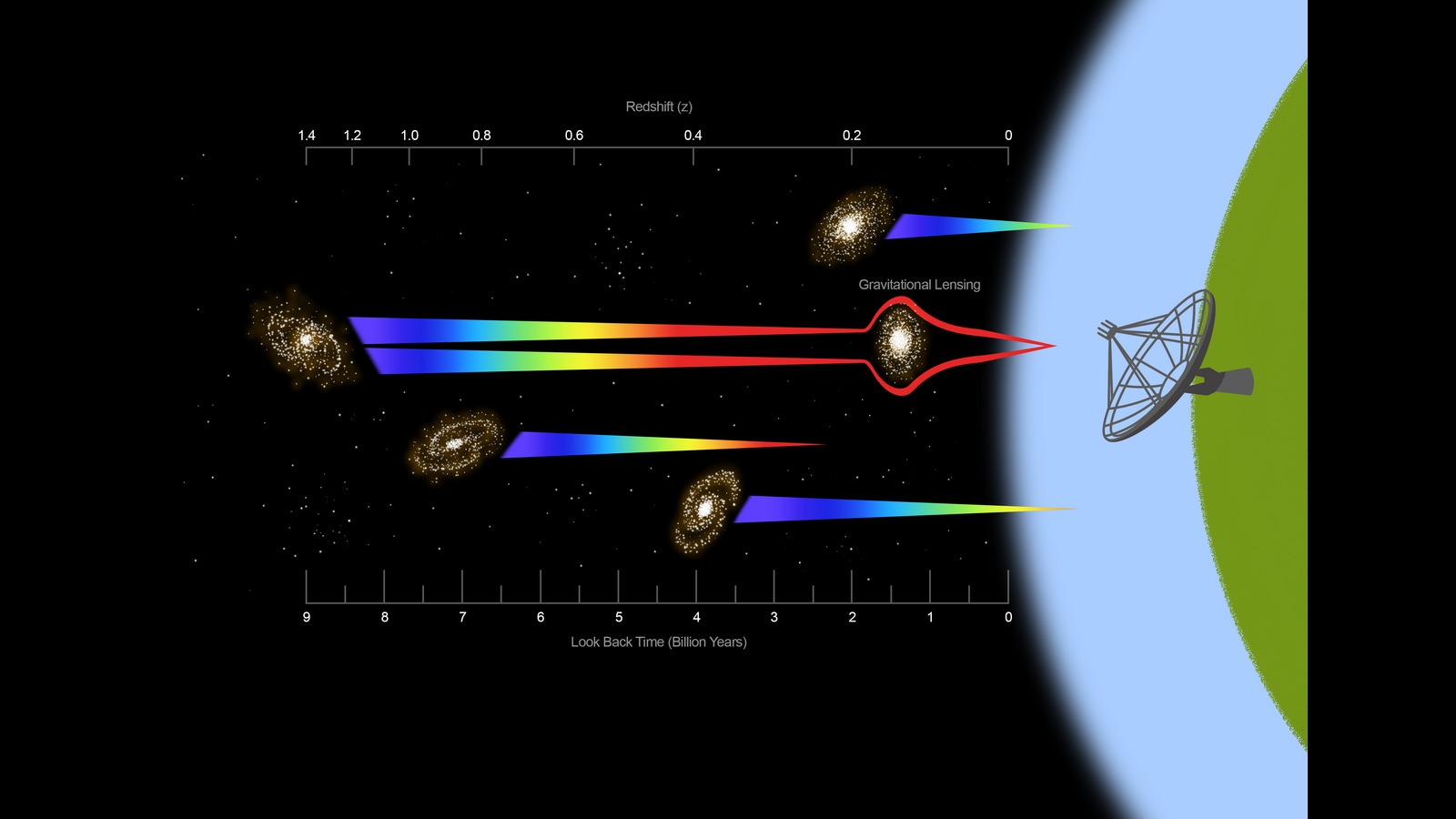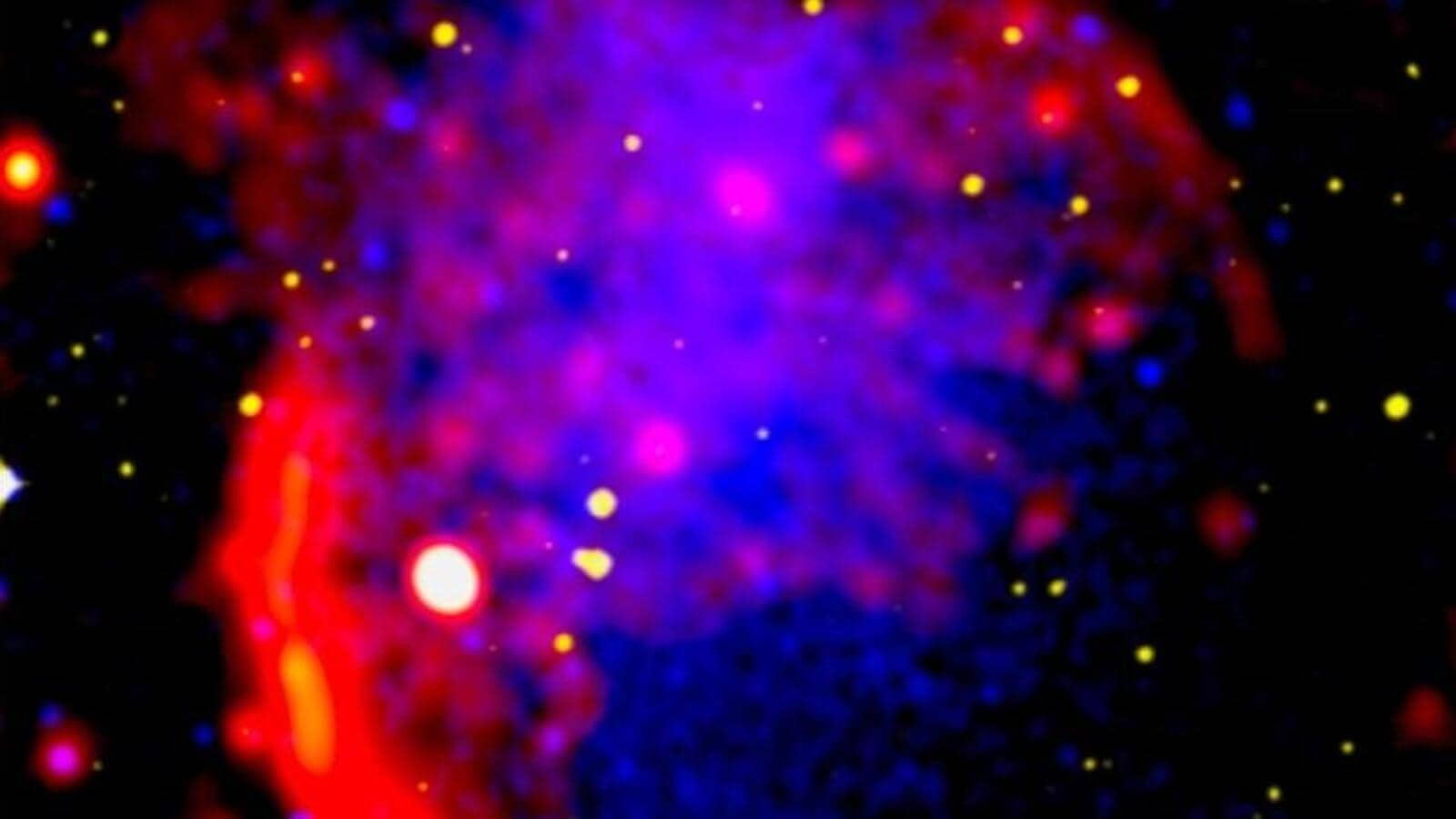ajay0
Well-Known Member
Radio signal from 9 billion light-years away from Earth captured.
Astronomers from McGill University, Canada and Indian Institute of Science (IISc), Bengaluru have detected a radio signal originating from atomic hydrogen in an extremely distant galaxy using data from the Giant Metre Wave Radio Telescope (GMRT) in Pune, India. So far, this is the largest astronomical distance over which such a signal has been picked up. It is also the first confirmed detection of strong lensing of 21 cm emission from a galaxy. The findings have been published in the monthly notices of the Royal Astronomical Society.

 nypost.com
nypost.com

 www.hindustantimes.com
www.hindustantimes.com
Astronomers from McGill University, Canada and Indian Institute of Science (IISc), Bengaluru have detected a radio signal originating from atomic hydrogen in an extremely distant galaxy using data from the Giant Metre Wave Radio Telescope (GMRT) in Pune, India. So far, this is the largest astronomical distance over which such a signal has been picked up. It is also the first confirmed detection of strong lensing of 21 cm emission from a galaxy. The findings have been published in the monthly notices of the Royal Astronomical Society.
Giant Metrewave Radio Telescope in Pune helps detect atomic hydrogen from far-away galaxy
Finding opens up exciting new possibilities for probing the cosmic evolution of neutral gas with low-frequency radio...
www.downtoearth.org.in

Radio signal from 9 billion light-years away from Earth captured
A radio signal 9 billion light-years away from Earth has been captured in a record-breaking recording, Space.com said Friday.

Record-breaking detection of radio signal from atomic hydrogen in extremely distant galaxy using GMRT
Astronomers from McGill University, Canada and Indian Institute of Science (IISc), Bengaluru have detected a radio signal originating from atomic hydrogen in an extremely distant galaxy using data from the Giant Metre Wave Radio Telescope (GMRT) in Pune
A radio signal originating from atomic hydrogen in an extremely distant galaxy was detected by the Giant Metrewave Radio Telescope (GMRT) located in Pune. This is the largest astronomical distance over which such a signal has been picked up.
The findings have been published in the scientific journal Monthly Notices of the Royal Astronomical Society. Astronomers from McGill University in Canada and the Indian Institute of Science (IISc) in Bengaluru have used data from the telescope to detect atomic hydrogen.
Atomic hydrogen is the basic fuel required for star formation in a galaxy. When hot ionised gas from the surrounding medium of a galaxy falls onto the universe, the gas cools and forms atomic hydrogen. This then becomes molecular hydrogen and eventually leads to the formation of stars.
Understanding the evolution of galaxies over cosmic time requires tracing the evolution of neutral gas at different cosmological periods.

